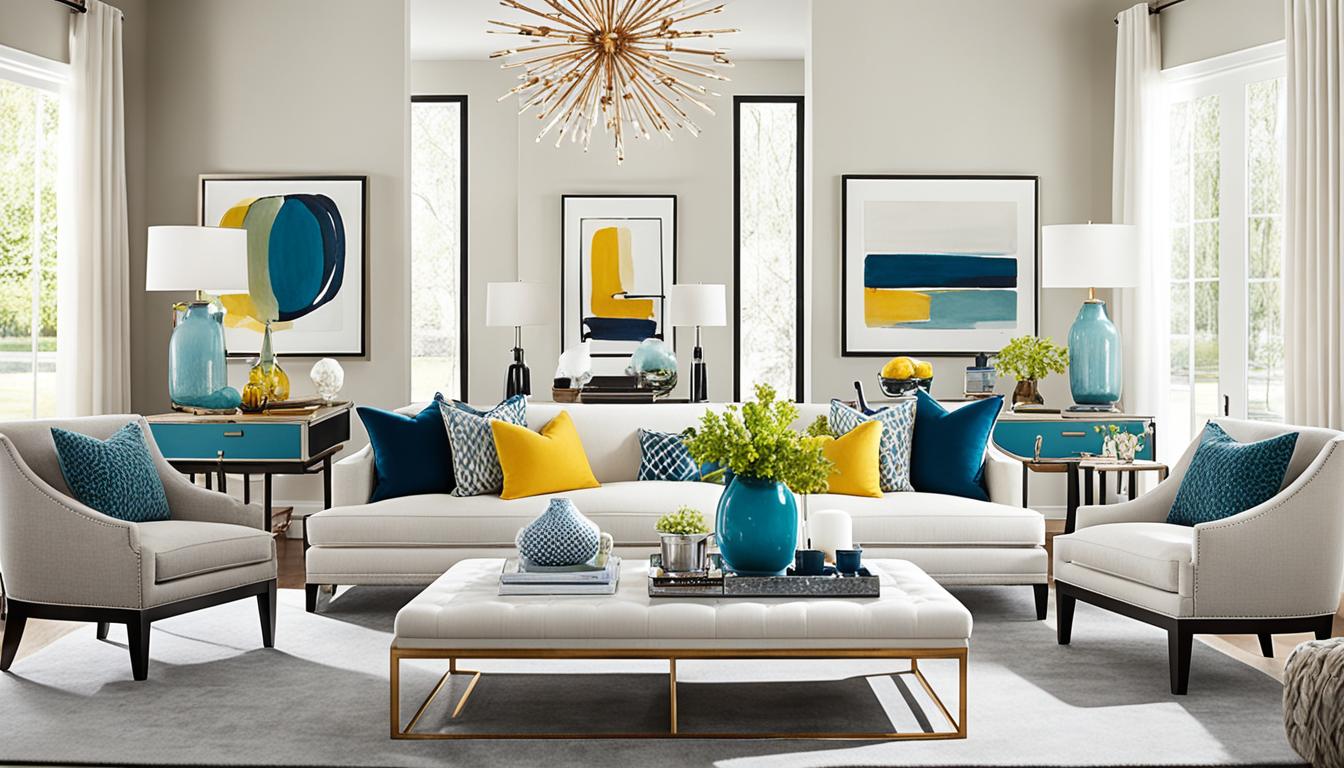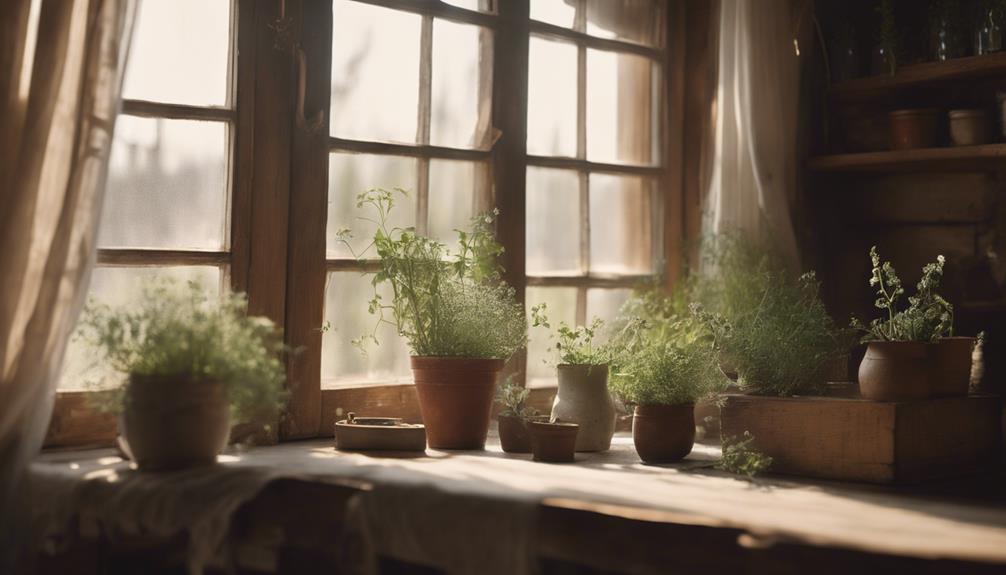Global events are influencing our daily lives in understated yet significant ways, particularly in home decor. After visiting Marrakech, a young couple was captivated by its vivid colors and intricate patterns. Upon returning home, they were eager to incorporate that worldly sense into their apartment.
Inspired by their travels, they turned their living space into an eclectic decor wonder. They filled their home with Moroccan lamps and lush textiles, each piece telling its own story. This transformation reflects a growing trend. More people are making their homes into places that show off cultural diversity and the richness of their travels.
Key Takeaways
- Global events significantly influence home decor trends.
- Eclectic decor reflects cultural diversity and individual travel experiences.
- Homeowners increasingly seek sustainable and eco-friendly solutions in decor.
- Natural light is a key priority in modern interior design.
- Connections between indoor and outdoor spaces are becoming essential in home layouts.
The Rise of Eclectic Global Decor
In recent years, eclectic decor has surged in popularity. It serves as a canvas for cultural diversity within homes. Homeowners embrace the chance to create spaces that tell their unique stories. They use influences from around the world. This mix of styles makes spaces not only interesting to look at but also deeply personal.
Influence of Cultural Diversity
The mix of different cultural elements in home design shows a love for cultural diversity. People travel and explore. They bring back items that show those experiences. Searches for things like ‘handmade’ and ‘eclectic interior design vintage’ are growing on sites like Etsy and Pinterest. This trend highlights a personal touch. It lets people show their heritage and life stories through their decor.
Blending Traditional and Modern Styles
Homeowners are now mixing traditional decor with modern looks. This creates a special and unified style. Brands like Armani Casa and Edra show this in their new collections. Their designs are luxurious and inspired by travels around the world. Home furnishings have contemporary designs now, like rounded sofas and cocktail tables. They also pay tribute to past styles. This mix creates rich, emotional, and historic spaces. Every corner has its own story.
| Trend | Description | Material/Color Preference |
|---|---|---|
| Eclectic Decor | Combining elements from different cultures | Variety of materials and colors |
| Modern Styles | Sleek, contemporary designs | Bold color choices like blues and jewel tones |
| Traditional Decor | Classic design elements and vintage finds | Earthy colors with a focus on natural finishes |
| Global Trends | Influences from around the world | Sustainable materials like cork and reclaimed wood |
Globalization’s Impact on Interior Design
Globalization has changed interior design a lot. It lets homeowners mix global styles with local ones. This mix creates vibrant, unique spaces that show off personal and cultural stories.
Access to International Styles
Now, homeowners can try out styles from around the world. In India, traditional designs use natural materials like wood and stone. These designs are full of colors and patterns, connecting spaces with nature.
Japanese design values simplicity and balance, creating peaceful spaces. It uses Zen principles for a clean, calm look. Brazil combines local and colonial styles with bright colors and bold patterns. In Argentina and Mexico, spaces blend Spanish colonial with local traditions for a cozy feel.
Incorporating Local Artistic Heritage
Including local art in interiors connects a home to its culture. Native American styles, for example, show a respect for nature. Adding these elements supports local artisans and helps preserve traditions.
Globalization makes it easier to mix local and international designs. This blend allows homeowners to create interiors with their own stories. It’s a way to honor where we come from while welcoming new influences.
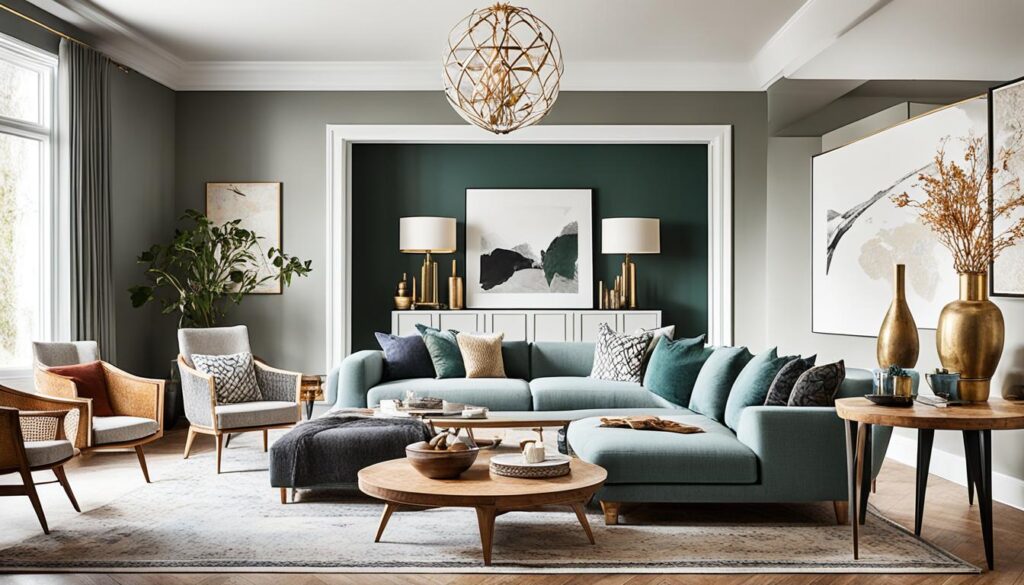
| Country | Design Features | Materials Used | Key Influences |
|---|---|---|---|
| India | Spiritual connectedness, vibrant colors | Wood, stone, mud | Traditional spirituality, nature |
| Japan | Simplicity, minimalism, elegance | Wood, fabric | Zen Buddhism, functionality |
| Brazil | Vibrant colors, bold patterns | Wood, stone | Indigenous and colonial styles |
| Mexico | Vibrant aesthetics, intricate decor | Natural materials | Pre-Columbian and Spanish influences |
| Argentina | Mix of styles, warm spaces | Natural materials | Spanish colonial, modernist |
Travel and Its Role in Home Decor Choices
Travel shapes home decor choices by bringing unique stories and artifacts into our spaces. Individuals infuse their homes with memories by incorporating souvenirs. This creates a personalized touch, transforming a house into a home.
Every item tells a story, making the home’s atmosphere more meaningful. Designers suggest using these pieces to make spaces that tell personal tales. They help evoke emotions linked to past travels.
Souvenirs and Personal Touches
Souvenirs are key in travel decor, reflecting one’s adventures. They can be handcrafted pottery, textiles, or art. These items serve as decor but also tell personal stories.
Such artifacts offer a sense of identity and cultural connection. They’re crucial for a home brimming with warmth and personality.
Creating Personal Memories at Home
Creating home memories means making travel influences visible. Designers suggest showcasing travel decor deliberately. This creates a gallery feel, inviting guests to explore the homeowner’s journeys.
By adding these personal elements, emotional connections to the living space are strengthened. It celebrates adventures and life’s cherished moments.
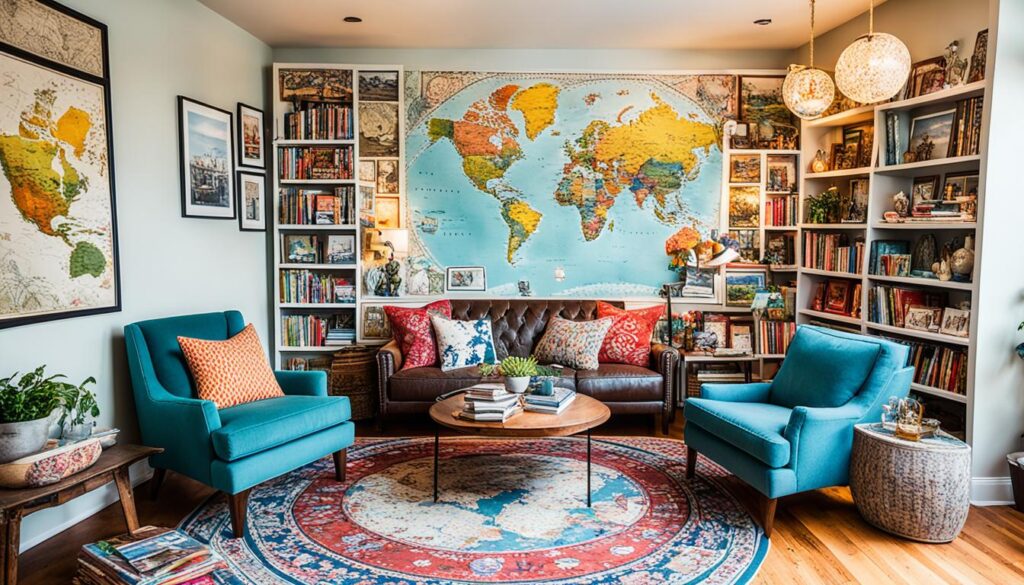
| Type of Souvenir | Example | Emotion Evoked |
|---|---|---|
| Textiles | Handwoven rugs | Nostalgia for market trips |
| Art | Local paintings | Connection to culture |
| Pottery | Clay pots | Memories of craftsmanship |
| Furniture | Vintage side tables | Sentimentality over age |
| Accessories | Decorative shells | Joy from beach days |
How Global Events are Influencing Home Decor Trends
Recent global events shape home decor trends, influenced by social movements and a push for artistic reflection. Homeowners favor designs with modern values, combining style and social responsibility. This change brings new concepts to home decor.
Social Movements and Artistic Expression
Social movements change how we see our living spaces. Using art in home decor lets us show what’s important to us. In 2024, we’ll see a mix of different cultures in decor, showing appreciation for diversity. People want items that tell a story, connecting us to bigger ideas.
Economical Factors Shaping Material Choices
Economic factors influence what materials we use in decor today. With a focus on green living, eco-friendly options are on the rise. There’s a growing demand for furniture made from recycled stuff. People now look for durable, quality pieces, showing care for the environment and future trends.

Top Regional Influences: Moroccan Design
Moroccan design is known for vibrant, welcoming atmospheres touched by cultural richness. It features bright colors, detailed textures, and unique accessories. These elements make any home look more exotic. They also reflect Moroccan culture’s deep traditions, making spaces visually richer.
Rich Color Palettes and Textures
The use of bold color palettes is key in Moroccan design. Home decor draws on colors like fuchsia and royal blue. Vibrant red and deep purple mirror Morocco’s landscapes and lively markets. This turns Moroccan-designed spaces into captivating havens. Textures are also important, blending materials like silk and sheer fabrics. This creates depth and keeps the decor interesting and distinct.
Accessorizing with Authentic Moroccan Decor
To truly capture Moroccan style, choosing the right accessories is essential. Items like intricately designed pottery, zillij tiles, and hand-carved furniture stand out. These add to the space’s texture and offer a sense of Moroccan craftsmanship. Plus, cozy furnishings and hand-woven rugs increase comfort. Brass and copper light fixtures not only light up a room but also add to its magic, similar to Moroccan homes.
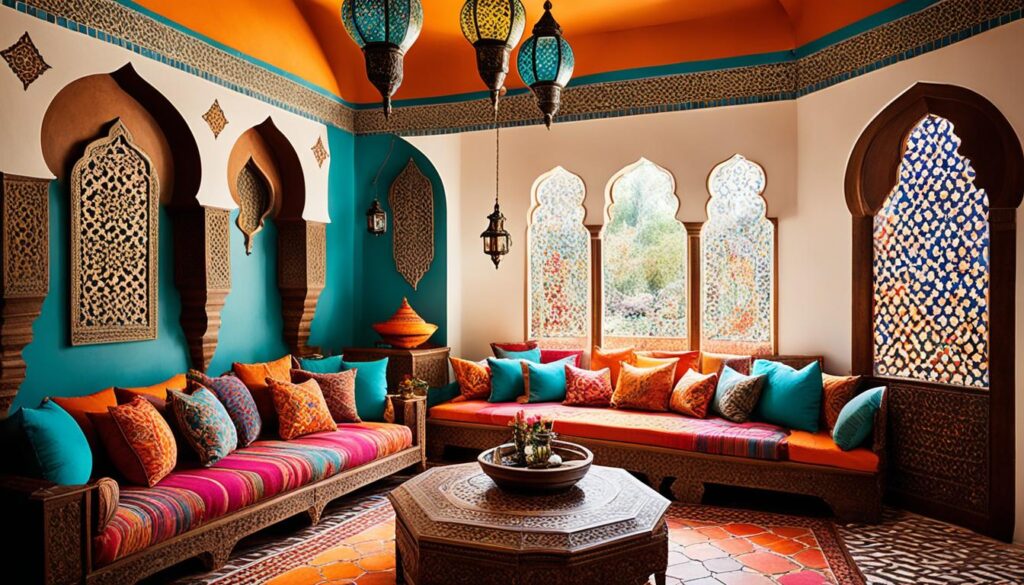
Environmental Awareness and Sustainable Materials
The push for environmental awareness is changing home decor. Now, it’s important to pick materials that are sustainable. These materials not only look good but also create healthier living spaces. More people worry about pollution and waste, so they want eco-friendly decor more than ever.
Growing Demand for Eco-Friendly Solutions
Nowadays, consumers prefer eco-friendly interior design solutions. They choose sustainable materials to express their values through their decor. The design industry has evolved, offering materials certified by the Sustainable Forestry Initiative (SFI). They also provide products with the ECOLOGO, which means they’re environmentally friendly.
Incorporating Reclaimed and Natural Materials
Reclaimed materials, like salvaged wood and recycled glass, help reduce waste. These materials add a special touch to any space. By using elements like responsibly sourced fabrics with the OEKO-TEX STANDARD 100 label, we ensure products are safe. It shows we care about good working conditions and fair pay in the industry.
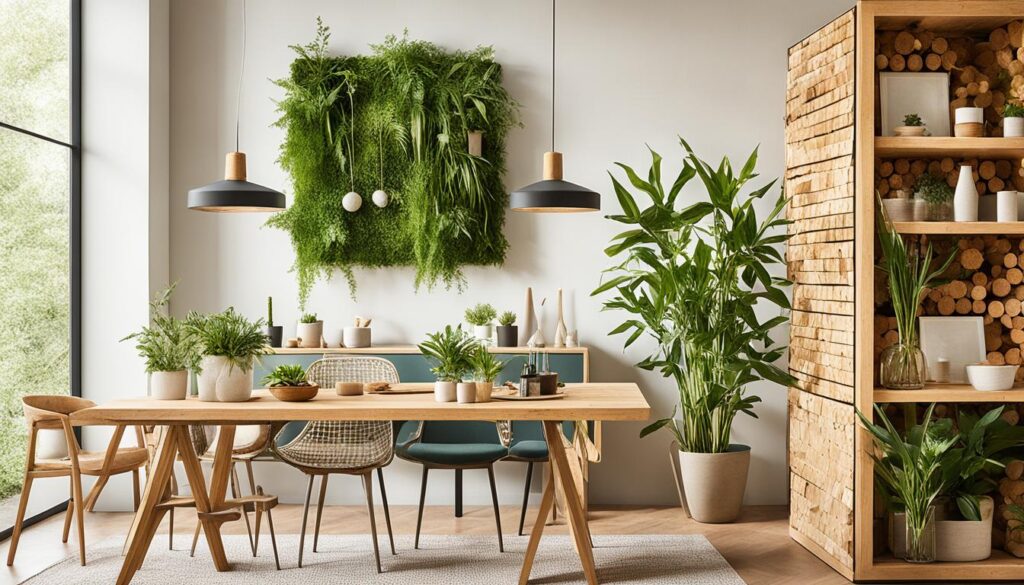
Choosing the right materials can lower our carbon footprint. By recycling and upcycling, we can make a big difference. Homeowners who make these choices have homes that are not only beautiful. They also promote health and have a positive effect on our planet.
Biophilic Design: Nature-Inspired Interiors
Bringing nature into our homes changes the feel and boosts health. Biophilic design focuses on nature’s elements to improve looks and wellness. Using natural designs helps people feel closer to the outside world.
Importance of Natural Elements
Natural materials like wood, stone, and terracotta are becoming popular again. Unlike synthetic materials, they offer realness and warmth.
The mix of earthy colors and natural pieces makes spaces welcoming. This blend increases comfort.
Enhancing Well-Being with Organic Designs
Well-being increases with organic shapes and textures in the decor. Curvy furniture and handmade items make spaces interesting and beautiful. Indoor plants clean the air and add life to spaces.
In cities, outdoor connections through vertical gardens are essential. Biophilic design fits well with modern living.
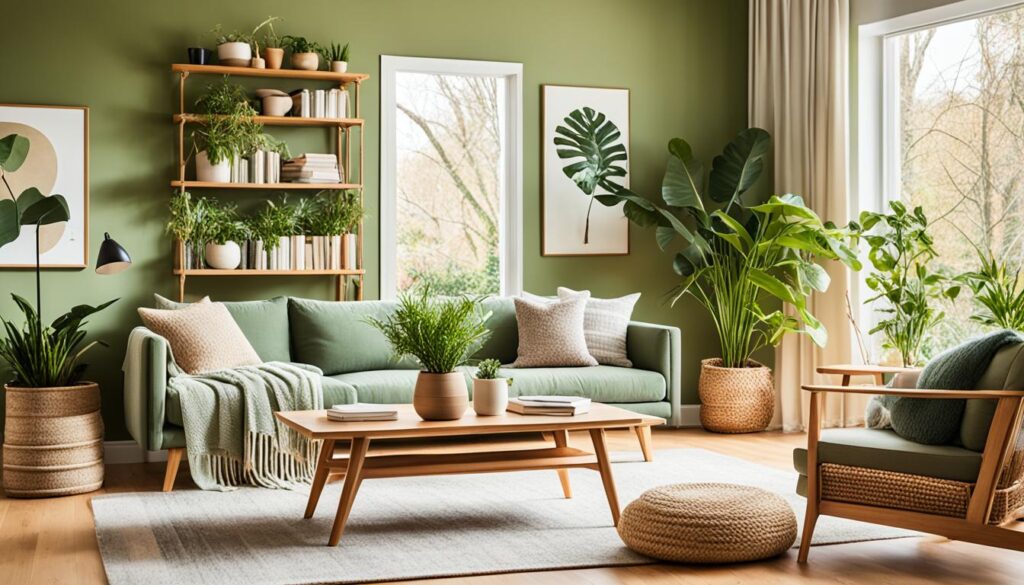
Shifts in Color Preferences Influenced by Nature
Recently, there’s been a noticeable change in color preferences for home decor. This shift shows a strong connection to nature, favoring earthy tones. Such changes highlight the psychological impact colors have on our well-being and the feel of our homes.
Adopting Earthy Tones and Nature’s Palette
More homeowners now choose earthy tones to create peaceful spaces. Shades like green, brown, and soft blue bring calm. These colors, inspired by nature, help us find peace and stillness. They range from muted greens of lush places to deep browns like rich soil. Colors like these improve our mood and make spaces welcoming.
Seasonal Changes and Color Trends
Seasonal decor trends show how our color likes change over the year. Spring brings pastels; summer, brighter shades. Come fall, earthy colors are back, echoing nature’s shift. This cycle not only looks good but connects us to the outdoor world. Each season’s colors let us match nature’s pace.
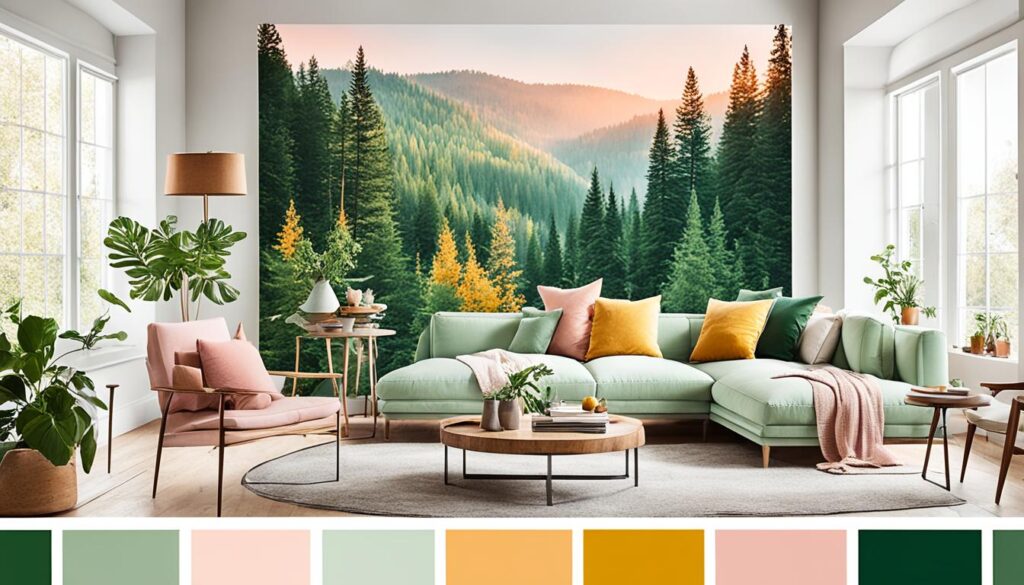
| Decade | Color Trends | Characteristics |
|---|---|---|
| 1950s | Pastel colors | Mint green, baby blue, pink |
| 1970s | Earthy tones | Avocado green, harvest gold, burnt orange |
| 1980s | Neon colors | High-contrast combinations |
| 1990s | Neutral colors | White, beige, grey |
| 2000s | Mixed palettes | Traditional and modern blends |
| 2010s | Trendy colors | “Greige,” “Millennial Pink” |
| 2020s | Nature-inspired colors | Earthy browns, calming greens, soft blues |
Architectural Changes Reflecting Global Styles
Architectural styles now reflect a worldwide design view. A key trend is creating open spaces that bring in natural light. This makes interiors brighter and more welcoming. It combines indoor and outdoor living, letting nature and architecture blend perfectly.
Open Spaces and Natural Light Concept
Modern designs focus on open layouts to help spaces flow better. This method lets natural light spread through homes, making them warm and welcoming. Big windows and glass doors mix indoor and outdoor views, bringing nature inside. These designs boost looks and health, since natural light can lift moods and make us more productive.
Integrating Indoor and Outdoor Living Spaces
Today’s homes are turning into retreats by mixing outdoor areas with indoor living spaces. This mix is key in modern architecture. It lets people feel closer to nature. Different styles from around the world influence these designs. Whether it’s tropical pergolas or city rooftop gardens, the goal remains the same: to make living spaces that cherish the beauty of nature.
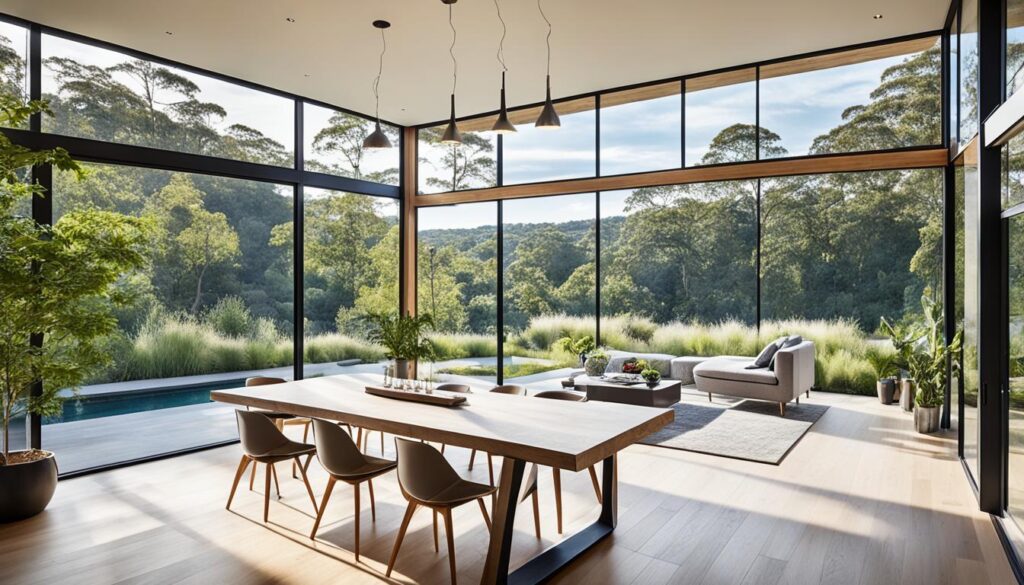
Conclusion
The mix of worldwide trends and personal touches is changing home decor. Owners are now focusing on designs that show their values. This leads to a mix of styles and a push for eco-friendly choices.
Social media, like Instagram and Pinterest, play a big role in setting trends. They help make stylish home decor more available and cheaper for everyone. This shapes the future of interior design in special ways.
DIY projects have also gained popularity, thanks to sites like YouTube. They let people show their unique style and creativity, no matter their budget. Homes are becoming smarter and more technology-friendly. They are also focusing more on wellbeing.
The shift toward green practices and new tech is changing interior design for the better. It’s moving towards more personal, cost-effective, and lively designs. New trends give designers and homeowners the chance to create spaces that are truly theirs. These spaces also celebrate different cultures around the world.

